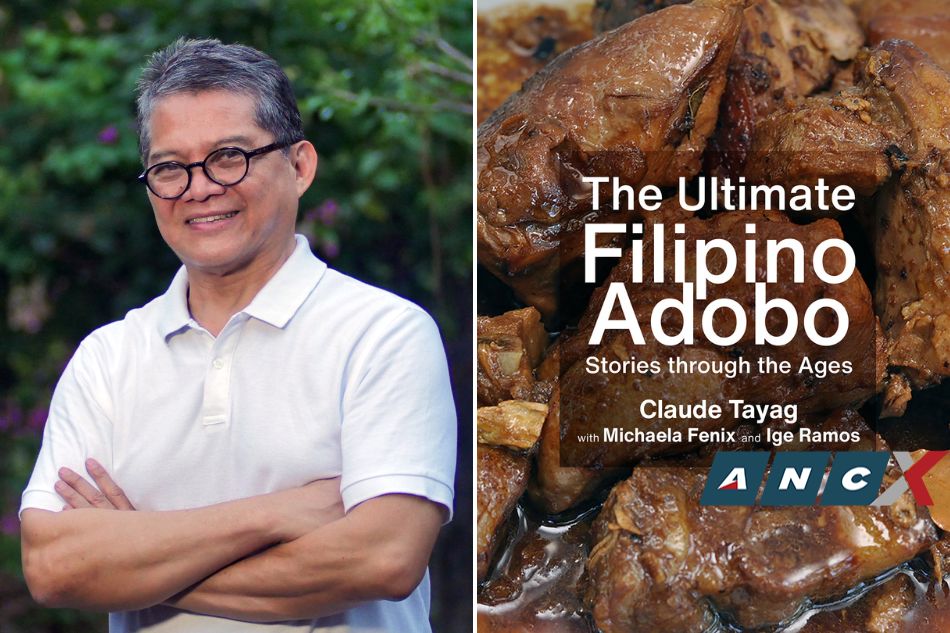“To say there are 7,640 recipes of our adobo is an understatement. There are as many kinds of adobo as there are households,” chef-restaurateur, artist, and four-time author Claude Tayag writes in his latest book “The Ultimate Filipino Adobo Stories Through the Ages.”
It’s another way of saying there is no one best way to cook the Philippines’ unofficial national dish. No matter how many adobo variants we’ve tasted in our lifetime, nothing compares to the one we grew up with. The one cooked by our mother, lola, yaya. The one linked with memories special to us.
Which is why when the Department of Trade and Industry announced in July 2021 that it was going to standardize the cooking technique for adobo, the news was met with strong criticism from chefs, restaurateurs, and ordinary folk.
Tayag had written about the controversial topic in his Philippine Star column one too many times, and about adobo in general, such that it spawned its own series. He ended up interviewing about a hundred people about their favorite adobo recipes and memories. These cherished recollections are the lifeblood of “The Ultimate Filipino Adobo Stories Through The Ages.”
“It’s not your usual recipe book that’s written in step-by-step format,” the chef offers. The contributors narrate their adobo recipes as essays. “But reading the stories, you will more or less get the gist of how [their adobo] is done and you can replicate it at home.”
Among those who shared their cherished adobo stories were chefs Charles Olalia (he had a popular adobo in Ma’am Sir, his L.A. restaurant that closed in 2020), Tom Cunanan (Bad Saints), Robby Goco (Cyma), Jessie Sincioco (Chef Jessie Rockwell Club) and Sunshine Puey (Gourmandise By Sunshine), food writer and cookbook author Angelo Comsti, broadcast journalist Ces Drilon, restaurateur Amy Besa (Purple Yam), food writer Betty Ann Quirino, cookbook author Lanai Tabura, and National Artist for Visual Arts Ben Cabrera.
The Pampanga-born Olalia shares in the book that adobo was a staple dish at home growing up. “Just like a heartbeat, it was constant, rhythmic, automatic.”
So when he moved to America, he started to miss the adobo his parents cooked back in Bacolor. “How can a dish made with no more than 6 ingredients be so hard to execute?” he thought. “The aroma was so particular, very pointed, specific.”
As he moved on in his career, lived in different cities, and got exposed to different cuisines and cultures, there’s been nothing like the first. “I still haven't seen anything so simple yet creates such emotions,” he shares. “What I realized was adobo is not a recipe, it’s a feeling, it’s a moment in time.”
In the book, Charles shares his own chicken adobo recipe. He marinates the meat in toyo, suka, garlic, and black pepper for an entire day, and then it’s simmered for an hour and 30 minutes. “Then I pull the chicken off the braise, and air it for a bit. Reduce the sauce, fortify with grilled and mashed chicken liver to thicken.”
Here’s where he makes it even more extra: “On a separate pot, I make garlic oil by slowly frying garlic with toasted bay leaves and Thai chili. I add the chicken back, baste a bit, finish with the oil and a flurry of fresh cracked black pepper."
Tayag’s book also shares a recipe contributed by Anita Magsaysay Ho in Reynaldo Gamboa Alejandro and Nancy Reyes-Lumen’s “The Adobo Book,” published in 2004. Called “Cornish hen adobo,” it’s an interesting spin to the dish from one of the country’s foremost modernists. It uses, as the name suggests, Cornish or spring chicken, and proposes apple cider vinegar as acid component. The painter throws in button mushrooms, green olives, and quail eggs for an even more layered dish.
Have you thought of grilling your adobo? BenCab once did. He tried it when he and his family moved to London in the early 70s. Since their standalone house allowed for an outdoor grilling space, he added a grilling step to his adobo to achieve that delightful smoky flavor. For a more complete picture of the process, it’s all in the book.
Tayag says Filipino food has gained ground over the past 10 years, as proven by recognitions earned by Filipino restaurants like Kasama Chicago and Bad Saints. Our food like the sinigang has figured time and again in the popular Taste Atlas surveys. Filipino cuisine has even made it on the covers of international food magazines.
“We may be late-bloomers, but it’s our time now. As proven, we don’t need any government intervention [in standardizing our recipes],” Tayag says. “We’re there already, nakikilala na tayo. Yung momentum nandoon na.”
But we need to keep pushing to sustain the momentum, and this is where books like “The Ultimate Filipino Adobo Stories Through the Ages” comes in. It celebrates a dish we can all do and be proud of. National Artist for Literature Rio Alma’s poem puts it brilliantly what the adobo means to us (you can also find this in the book):
DALIT SA ADOBO
Ay! Ang adobo ni Inang
Pantag — araw — pantag — ulan;
Parang pusong nagmamahal
Mas masarap pag nagtagal.
[To order copies of “The Ultimate Filipino Adobo Stories Through the Ages,” message 0917-5355163.]



